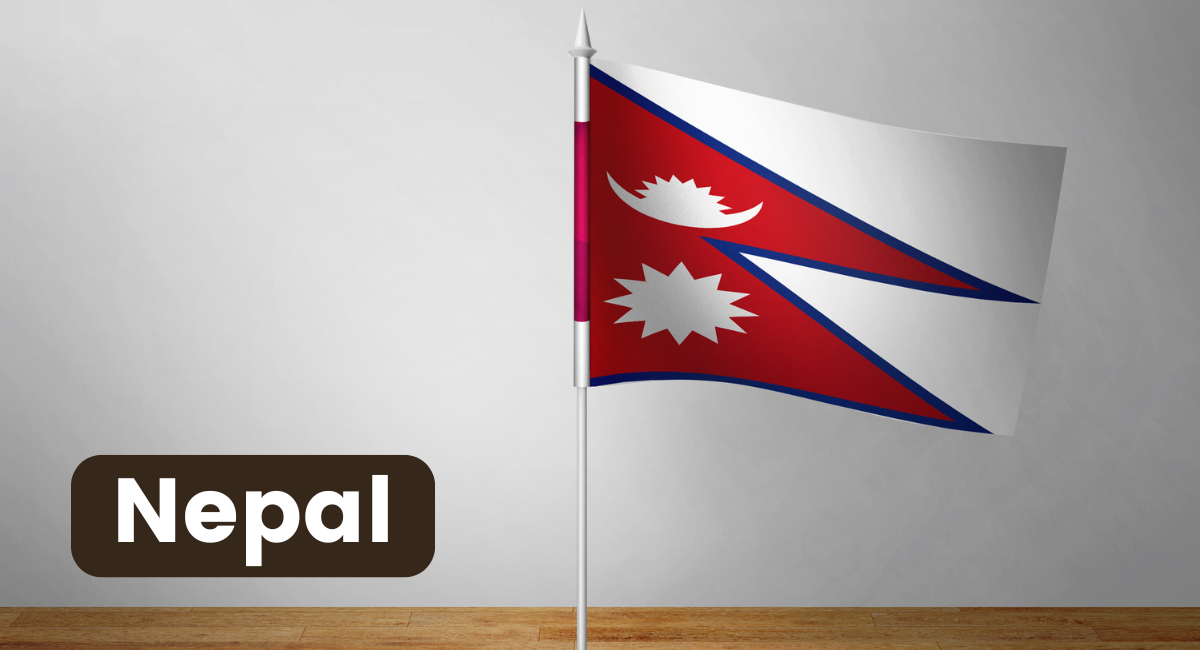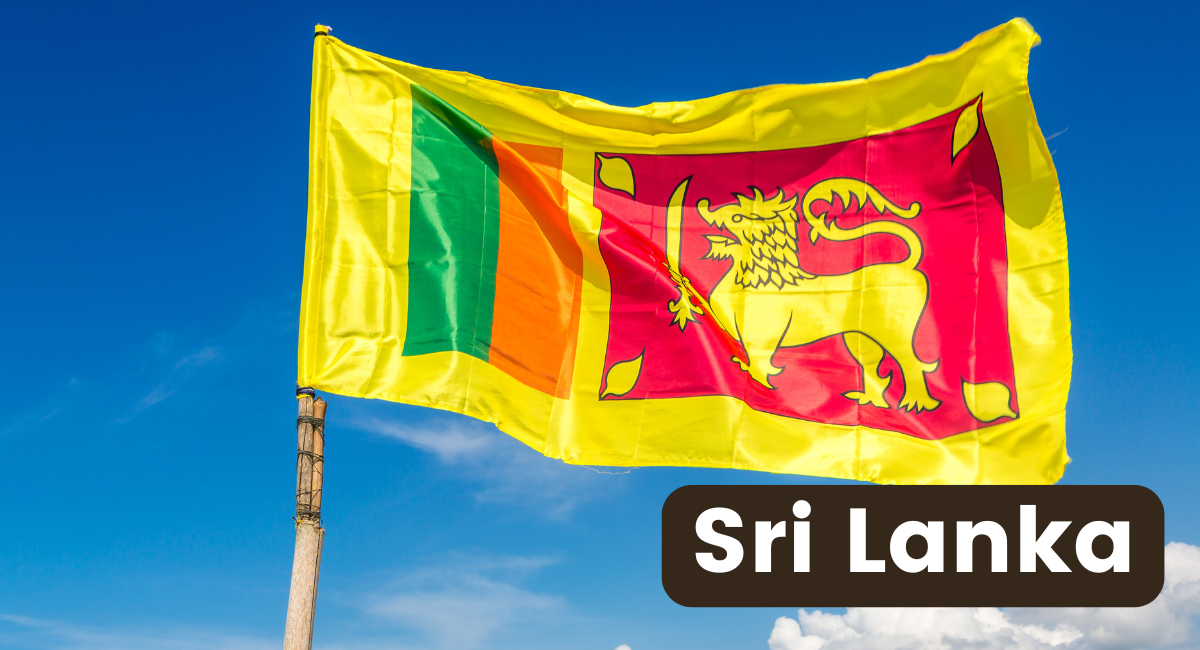Flags serve as powerful symbols of national identity, representing a country’s history, culture, and values through design and color. Some flags stand out for their exceptional beauty, blending meaningful symbolism with artistic flair. Among the top 10 most beautiful flags in the world are Bhutan, with its striking dragon motif symbolizing protection and strength, and Mexico’s vibrant tricolor, featuring an intricate eagle emblem derived from an Aztec legend. These flags captivate with their rich colors and deep connections to their nation’s heritage, making them not just visually appealing but culturally significant.
Other notable mentions include Nepal’s unique non-rectangular flag, symbolizing the Himalayas and the nation’s Buddhist and Hindu roots, and Japan’s minimalist design, which reflects the rising sun. The bold geometric design of the Union Jack, representing the unity of the United Kingdom, and South Africa’s colorful flag symbolizing post-apartheid unity, also make this list. Each flag is a visual representation of its country’s spirit, combining history, culture, and design in ways that stand out on the global stage.
Top 10 Most Beautiful Flags in the World
1. India

The national flag of India, known as the “Tiranga,” is a symbol of pride, unity, and diversity for the Indian people. Comprising three horizontal stripes of saffron, white, and green, the flag represents different values and ideals. The saffron color at the top symbolizes courage and sacrifice, while the white in the center signifies peace and truth. The green stripe at the bottom represents faith and chivalry. In the center of the white stripe is a navy blue Ashoka Chakra, a 24-spoke wheel that symbolizes the eternal wheel of law, progress, and righteousness.
The design of the Indian flag reflects the rich cultural heritage and values of the nation. Adopted on July 22, 1947, just days before India gained independence from British rule, the flag serves as a reminder of the country’s struggle for freedom and the ideals it stands for. The Tiranga is flown with great respect and pride across India, especially on national holidays such as Independence Day and Republic Day. Its vibrant colors and meaningful symbolism resonate with the diverse population of India, making it one of the most beautiful flags in the world. The flag not only represents the unity of the country but also embodies the spirit of its people, celebrating their heritage, culture, Festivals of India, and aspirations for the future.
2. Mexico

The flag of Mexico is a striking representation of the country’s rich history and cultural heritage. Featuring three vertical stripes in green, white, and red, the flag’s design is both simple and deeply symbolic. The green stripe represents hope and the independence movement, while the white symbolizes purity and the desire for peace. The red stripe signifies the blood of national heroes who fought for the country’s freedom. At the center of the flag lies a vibrant coat of arms, depicting an eagle perched on a prickly pear cactus, holding a serpent in its beak. This emblem is steeped in Aztec mythology and symbolizes strength and resilience, making the flag not only visually appealing but also rich in meaning.
The colors and symbols of the Mexican flag come together to create a powerful national identity that resonates with its citizens. The combination of vivid hues creates a dynamic and eye-catching display, making it one of the most recognizable flags worldwide. During national celebrations, the flag is often showcased prominently, and its image evokes a strong sense of pride among Mexicans, both at home and abroad. From its historical significance to its stunning design, the Mexican flag beautifully encapsulates the spirit of the nation and serves as a reminder of the values and struggles that shaped the country.
3. Nepal

Nepal’s flag is one of the most distinctive and beautiful flags in the world, renowned for its unique non-rectangular shape. Comprising two stacked triangles, the flag features a vibrant crimson background symbolizing the bravery of the Nepalese people. The upper triangle displays a white moon, representing peace and serenity, while the lower triangle showcases a white sun, symbolizing the fierce spirit of the nation. This captivating design not only sets Nepal’s flag apart but also embodies the rich cultural heritage and profound spiritual beliefs of the country, making it a powerful representation of Nepalese identity.
The symbolism of Nepal’s flag extends beyond its striking colors and shapes. The two triangles represent the Himalayas, the nation’s pride and natural beauty, while the moon and sun illustrate the importance of both peace and valor in the Nepalese ethos. Additionally, the use of crimson and blue colors resonates with the national colors of Nepal, where crimson signifies the bravery and courage of its people, and blue symbolizes peace and harmony. This intricate and meaningful design reflects Nepal’s rich history and cultural diversity, making the flag not only beautiful but also deeply representative of the nation’s values and aspirations.
4. South Africa

5. Japan

The flag of Japan, known as the “Nisshoki” or “Hinomaru,” is a striking emblem that represents the nation’s identity with its minimalist design. Featuring a bold red circle on a pristine white background, the flag symbolizes the sun, a significant cultural and historical icon for the Japanese people. This simple yet powerful design reflects the values of purity, sincerity, and tranquility, making it one of the most recognizable flags in the world. The red circle is often associated with the rising sun, symbolizing hope and new beginnings, which holds a special place in Japanese tradition and folklore.
Japan’s flag is not only visually appealing but also deeply meaningful. The stark contrast between the vibrant red and the clean white background creates a sense of harmony and balance, embodying the principles of Zen philosophy that permeate Japanese culture. The flag’s simplicity speaks volumes, emphasizing that beauty can be found in minimalism. Its enduring design has made the flag a beloved national symbol, evoking pride and unity among the Japanese people, and serving as a reminder of their rich cultural heritage and resilience.
6. Brazil

Brazil’s flag is a vibrant representation of the country’s rich culture and natural beauty. Dominated by a lush green field, the flag features a large yellow diamond at its center, symbolizing Brazil’s wealth and resources, particularly its gold reserves. Inside the diamond lies a blue globe adorned with 27 white stars, which represent the sky over Rio de Janeiro on the night of Brazil’s independence, along with the country’s motto, “Ordem e Progresso” (Order and Progress). The striking combination of green, yellow, and blue makes the flag one of the most visually captivating in the world, symbolizing the unity and diversity of Brazil’s people and landscapes.
Beyond its striking aesthetics, the flag of Brazil is steeped in meaning and history. Each color and element reflects the country’s identity and aspirations. The green represents the lush forests and the natural beauty of Brazil, while the yellow signifies the richness of its land. The stars on the blue globe highlight Brazil’s geographical vastness and the various states within the federation. Together, these elements create a flag that is not only beautiful but also a powerful symbol of national pride, unity, and the vibrant spirit of the Brazilian people.
7. United Kingdom

The flag of the United Kingdom, commonly known as the Union Jack, is a striking symbol of national identity and unity. This iconic flag features a unique design that combines the crosses of St. George (patron saint of England), St. Andrew (patron saint of Scotland), and St. Patrick (patron saint of Ireland). The bold red, white, and blue color scheme creates a visually appealing and instantly recognizable emblem, representing the rich history and diverse cultures of the UK. The intricate design, with its overlapping crosses, reflects the union of the four nations that make up the United Kingdom: England, Scotland, Wales, and Northern Ireland.
Beyond its aesthetic appeal, the Union Jack carries deep historical significance and has become a symbol of British heritage and pride. Its origins date back to the early 17th century, evolving over time as the political landscape of the British Isles changed. The flag’s design has made it a popular icon not only within the UK but also around the world, often associated with British values such as resilience, tradition, and unity. Whether displayed during national celebrations or international events, the Union Jack continues to captivate hearts and minds, serving as a beautiful representation of a nation with a rich cultural legacy.
8. Sri Lanka

The flag of Sri Lanka is a vibrant representation of the country’s rich cultural heritage and diverse population. Its design features a golden lion holding a sword, symbolizing strength and bravery, which stands prominently against a deep maroon background. This maroon section represents the Sinhalese majority, while the flag also includes four Bo leaves at each corner, signifying the four Buddhist principles of kindness, compassion, joy, and equanimity. The green and orange vertical stripes on the left side of the flag represent the Muslim and Tamil minorities, respectively. This harmonious blend of elements makes the Sri Lankan flag a beautiful and meaningful symbol of national identity.
The colors and symbols of the Sri Lankan flag not only reflect the country’s demographics but also embody its historical and spiritual significance. The lion represents the island’s historical monarchy, while the Bo leaves emphasize the importance of Buddhism in Sri Lankan culture. The overall design of the flag conveys a message of unity and resilience, highlighting the importance of coexistence among Sri Lanka’s diverse communities. With its striking colors and profound symbolism, the Sri Lankan flag stands out as one of the most beautiful flags in the world, capturing the essence of the nation’s spirit and values.
9. Bhutan

The flag of Bhutan is a striking representation of the country’s rich cultural heritage and spiritual beliefs. Divided diagonally, the upper half is a vibrant yellow, symbolizing the secular authority of the king and the country’s prosperity. The lower half features a bold orange, representing the spiritual traditions of Buddhism, which is deeply ingrained in Bhutanese society. At the center of the flag is a fierce white dragon, known as Druk, which symbolizes the strength and protection of the Bhutanese people. The dragon clutches jewels in its claws, signifying the country’s wealth and the importance of safeguarding its natural resources. This unique combination of colors and symbols creates a visually stunning flag that reflects the essence of Bhutan’s identity.
Beyond its aesthetic appeal, Bhutan’s flag is rich in meaning and significance. The dragon’s fierce expression embodies the nation’s courage and resilience, while the jewels represent the importance of harmony and prosperity. The contrasting colors not only create a captivating design but also highlight the balance between spiritual and temporal power in Bhutan. The flag serves as a reminder of the country’s commitment to preserving its culture and traditions while embracing modernity. As one of the most beautiful flags in the world, Bhutan’s flag stands as a proud emblem of its people’s unity, values, and rich heritage.
10. Switzerland

The flag of Switzerland is a striking representation of the nation’s identity, featuring a bold white cross on a vibrant red background. This simple yet powerful design has deep historical roots, with the cross symbolizing Christianity and the nation’s commitment to neutrality and peace. The Swiss flag’s proportions are unique, being one of the few square national flags in the world, which adds to its distinctiveness. The red color signifies bravery and valor, while the white cross represents the values of honesty and integrity, making it a visually appealing symbol of national pride.
Beyond its aesthetic appeal, the Swiss flag carries significant cultural and historical weight. It is widely recognized as a symbol of Swiss neutrality, reflecting the country’s long-standing policy of non-involvement in military conflicts. The flag is also associated with Switzerland’s reputation for precision, quality, and craftsmanship, often seen in its renowned watchmaking and chocolate industries. This duality of beauty and meaning makes the Swiss flag not just an emblem of national identity, but also a celebrated representation of the values and traditions that define Switzerland.



